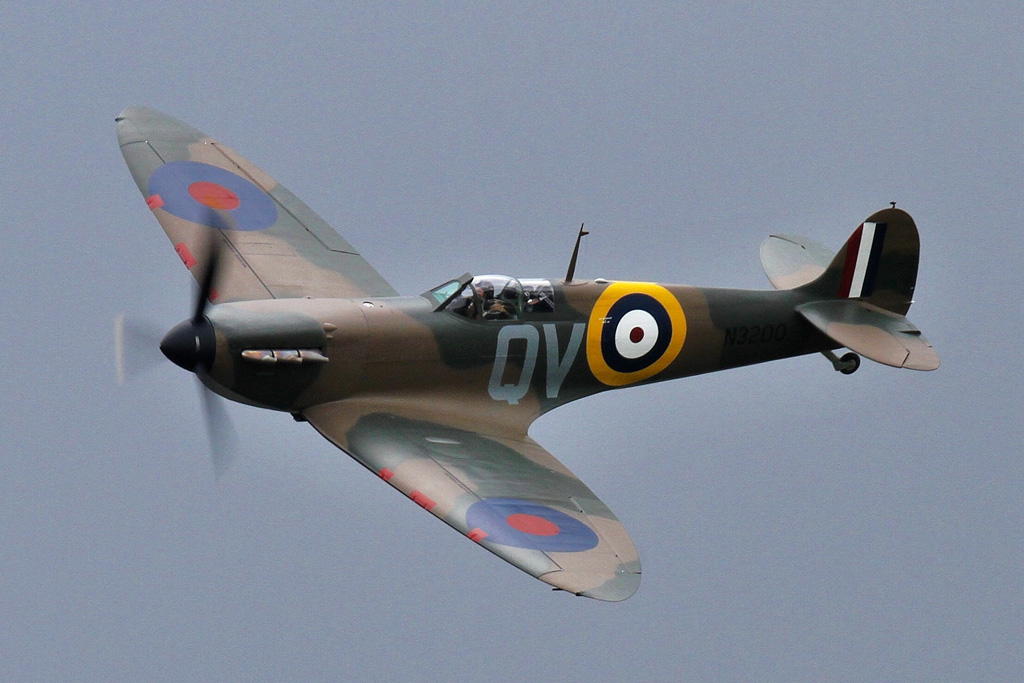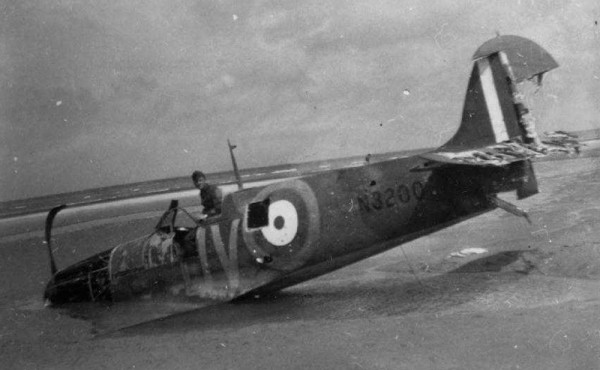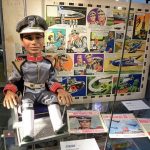
As reported on March 26, 2014 via Global Aviation Resource, Historic Flying Ltd. in Duxford, England successfully test flew the latest masterpiece to emerge from their workshops; Supermarine Spitfire Mk.Ia N3200. There are now four airworthy Mark I Spitfires in the world, something almost inconceivable just a few years ago.
This particular survivor has quite a colorful history, having been on strength with 19 Squadron at Duxford during the Battle of France. On May 26th, the Squadron’s commanding officer, Sqn Ldr Geoffrey Dalton Stephenson was flying N3200 during the evacuation of Dunkirk, protecting the British forces below. During combat with German fighters, N3200 received some bullet strikes; one of which holed the radiator. With his engine seized, Stephenson put the stricken Spitfire down on the beach at Sangatte, where he was picked up by the Germans and became a POW. The Spitfire sat on the beach, with the waves slowly burying her in the sand, and there she lay for another forty six years.
The Spitfire was eventually rediscovered in 1986, and exhumed by a group in France. Her remains went on display for the next decade or so at the famous underground V-3 Museum at la Forteresse de Mimoyecques, where during WWII Hitler intended to launch his V-3 “superweapon” upon the Allies. Simon Marsh and Thomas Kaplan repatriated N3200 in 2000, and she went into storage at various places around the UK before ending up with Historic Flying in 2007, under the new ownership of Mark One Partners LLC, who also own the now airworthy Spitfire Mk.I P9374. Several well known companies participated in the restoration, including the Aircraft Restoration Company (whose hangar HFL shares), Airframe Assemblies (which did a lot of the airframe reconstruction) and RetroTrack & Air (UK) which rebuilt her Merlin engine.
The Spitfire proudly wears the same livery she wore when she was with 19 Squadron flying from Duxford. That she is flying there once more is simply marvelous, and Sqn Ldr Stephenson would surely be proud. While Stephenson’s war in the air was short, he made a real nuisance of himself to the Germans while in captivity. Not satisfied with simply sitting out the war, he participated in several failed prison escapes, which eventually landed him in Colditz Castle as a trouble maker. There, alongside other notable POW’s, including his former RAF Cranwell classmate Douglas Bader, he helped to design and build a glider in secret, with the aim of escaping by flying from one of the castle’s towers. Known as the “Colditz Cock” the glider never did fly in anger, as the war ended before its completion. Interestingly, a team built and successfully flew a replica of the “Colditz Cock” using the original plans in 2000.
After the war, Stephenson continued his flying career with the RAF, which also included his serving as personal pilot to King George VI for a while. He rose to the rank of Air Commodore, but sadly lost his life while on an exchange trip with the US Air Force in November, 1954. He was test flying one of the very first production F-100A Super Sabre (53-1534) out of Eglin Air Force Base in Florida, when his aircraft unexpectedly dove in from 13,000 feet. Stephenson was one of the most experienced and respected jet pilots in the RAF at the time of his death. He is buried in the British plot at Maxwell AFB.
WarbirdsNews wants to thank Paul Filmer, and the team of Global Aviation Resource for allowing us the use of David Whitworth’s pictures.
[inpost_galleria thumb_width=”200″ thumb_height=”200″ post_id=”11394″ thumb_margin_left=”3″ thumb_margin_bottom=”0″ thumb_border_radius=”2″ thumb_shadow=”0 1px 4px rgba(0, 0, 0, 0.2)” id=”” random=”0″ group=”0″ border=”” type=”yoxview” sc_id=”sc1396069722131″]
























